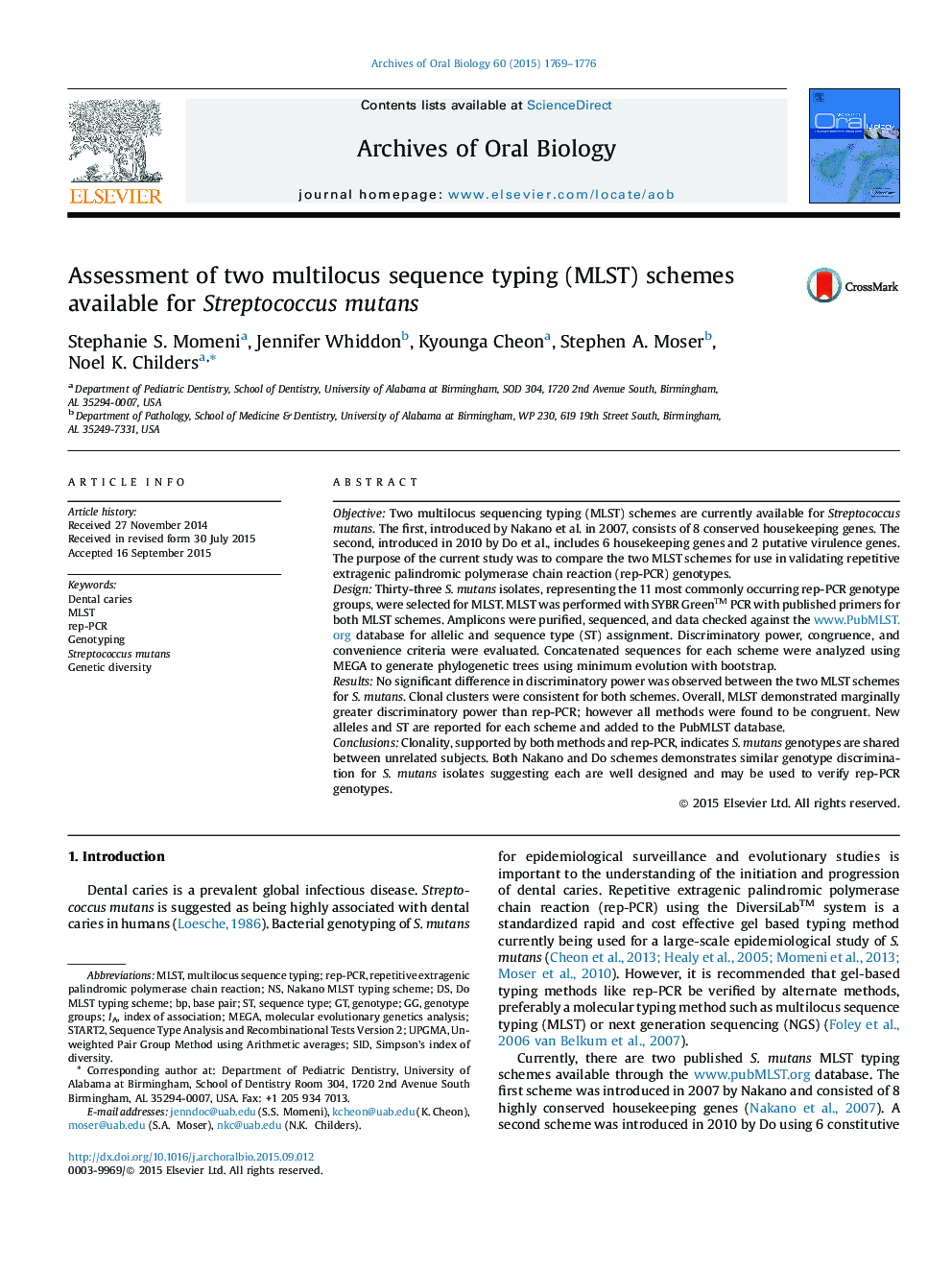| کد مقاله | کد نشریه | سال انتشار | مقاله انگلیسی | نسخه تمام متن |
|---|---|---|---|---|
| 3120642 | 1583293 | 2015 | 8 صفحه PDF | دانلود رایگان |

• The two MLST typing schemes available for Streptococcus mutans were comparable.
• This study independently validates each scheme and discusses practical aspects.
• Either scheme may be used to validate rep-PCR genotypes.
• New sequence types (ST) and alleles are contributed to the PubMLST database.
• Clonal isolates suggests possible transmission of S. mutans within this population.
ObjectiveTwo multilocus sequencing typing (MLST) schemes are currently available for Streptococcus mutans. The first, introduced by Nakano et al. in 2007, consists of 8 conserved housekeeping genes. The second, introduced in 2010 by Do et al., includes 6 housekeeping genes and 2 putative virulence genes. The purpose of the current study was to compare the two MLST schemes for use in validating repetitive extragenic palindromic polymerase chain reaction (rep-PCR) genotypes.DesignThirty-three S. mutans isolates, representing the 11 most commonly occurring rep-PCR genotype groups, were selected for MLST. MLST was performed with SYBR Green™ PCR with published primers for both MLST schemes. Amplicons were purified, sequenced, and data checked against the www.PubMLST.org database for allelic and sequence type (ST) assignment. Discriminatory power, congruence, and convenience criteria were evaluated. Concatenated sequences for each scheme were analyzed using MEGA to generate phylogenetic trees using minimum evolution with bootstrap.ResultsNo significant difference in discriminatory power was observed between the two MLST schemes for S. mutans. Clonal clusters were consistent for both schemes. Overall, MLST demonstrated marginally greater discriminatory power than rep-PCR; however all methods were found to be congruent. New alleles and ST are reported for each scheme and added to the PubMLST database.ConclusionsClonality, supported by both methods and rep-PCR, indicates S. mutans genotypes are shared between unrelated subjects. Both Nakano and Do schemes demonstrates similar genotype discrimination for S. mutans isolates suggesting each are well designed and may be used to verify rep-PCR genotypes.
Journal: Archives of Oral Biology - Volume 60, Issue 12, December 2015, Pages 1769–1776